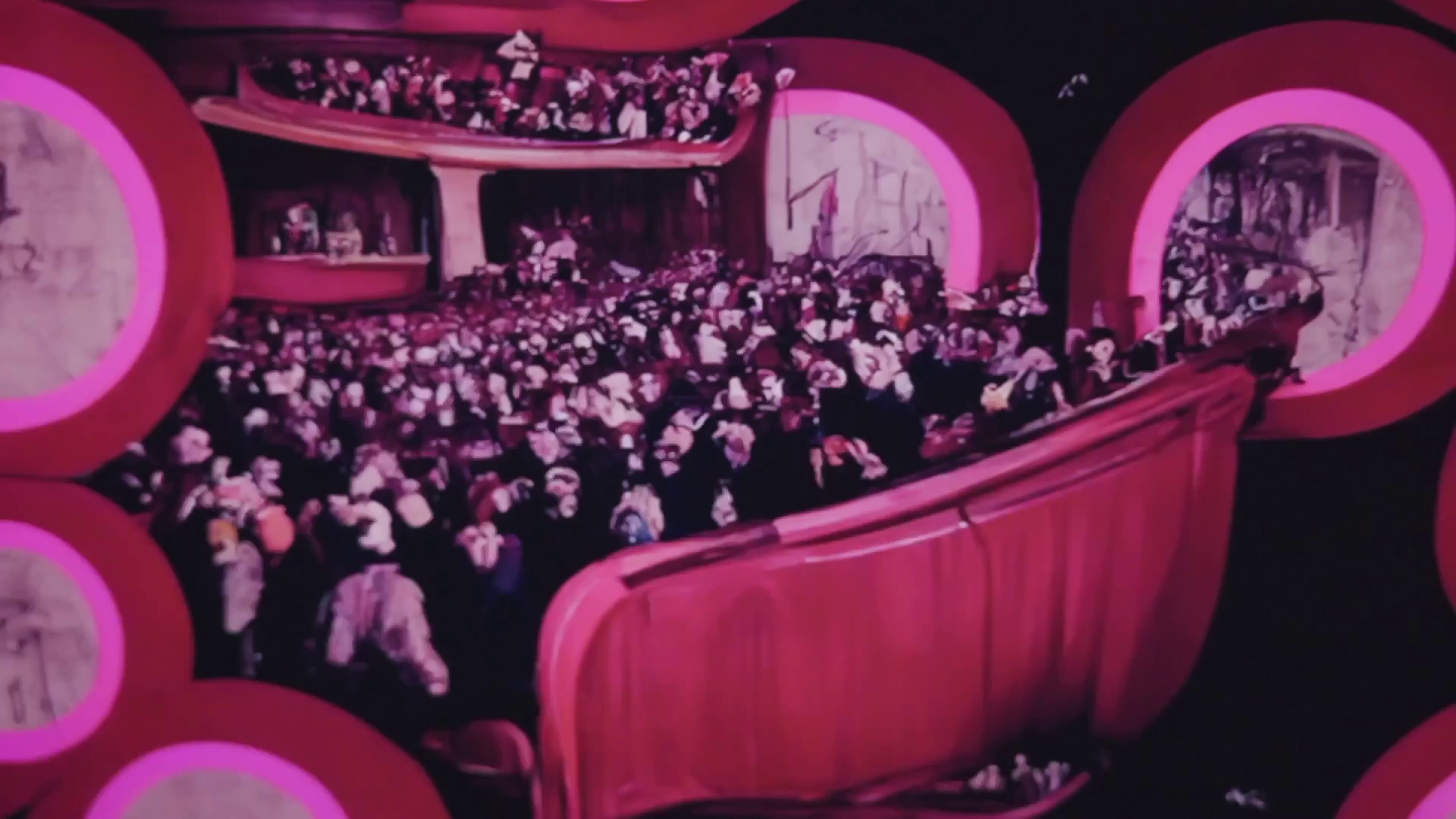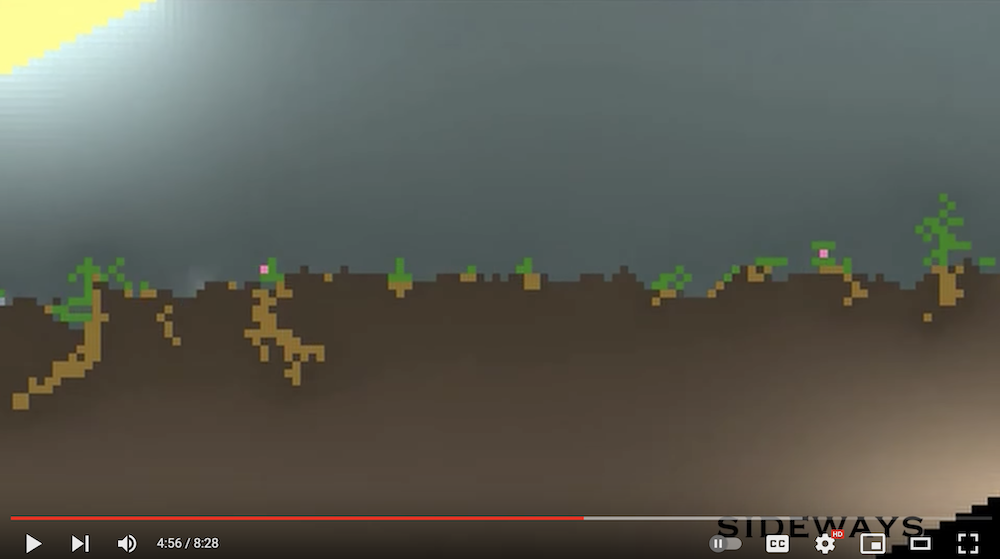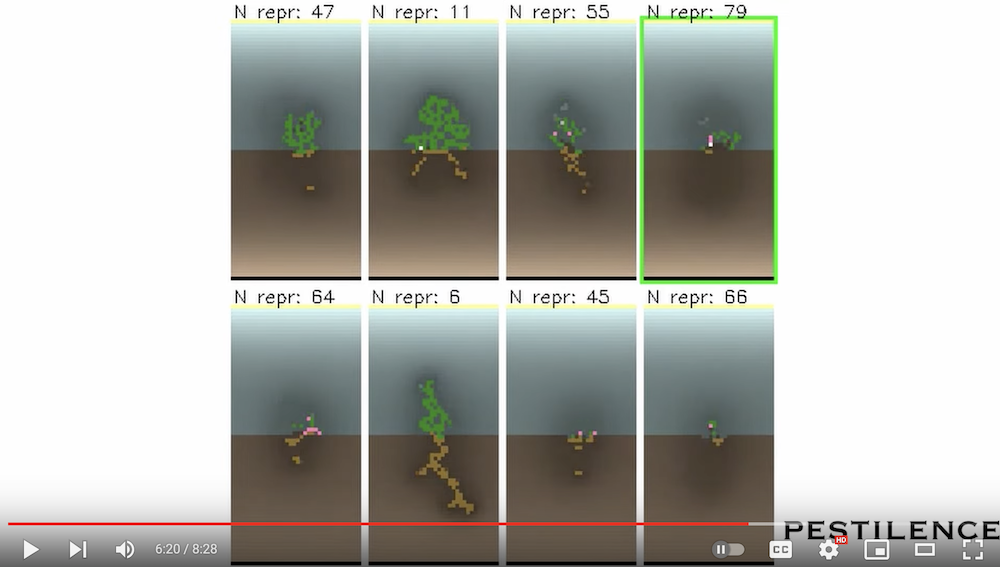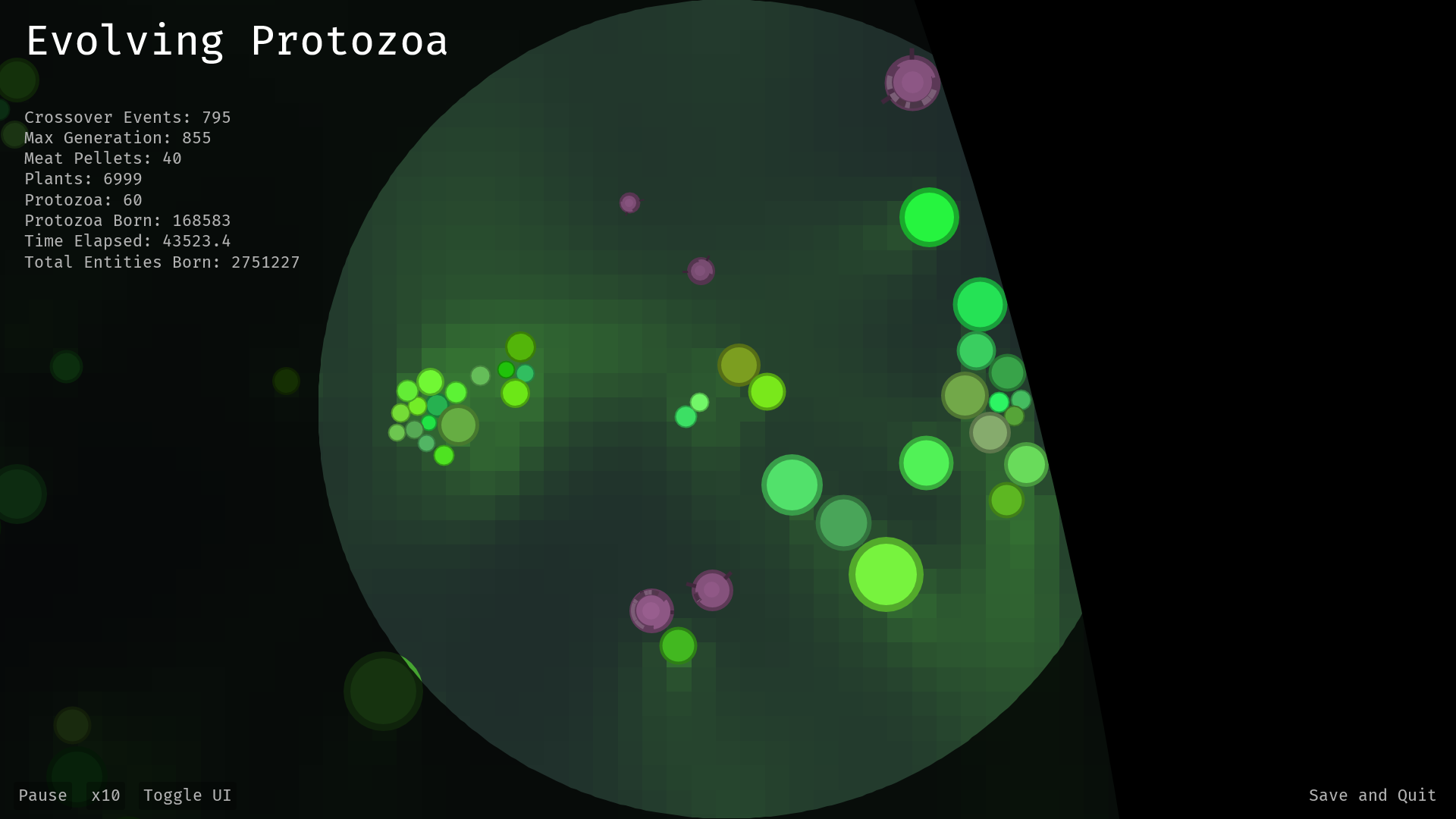Alife News
The Artificial Life Community Newsletter

A word from the team
Welcome to the 13th issue of the Alife Newsletter! We are back to our traditional online editions, and this time we got a nice selection of interesting Alife-y projects for you to check out!
The theme for this issue is Emergence. Emergence is a critical characteristic of Alife systems: the whole is bigger than the sum of parts. In the same way, your contributions interact with the brains of the readers in unexpected ways, creating new ideas and possibly new discoveries!
If you have any suggestions for future content, or would like to help us edit the newsletter, you can leave us a message in the feedback form. We specially appreciate messages from Master and PhD students who want to talk about their recent work. Send us a line! If you got something to share that other Alifers would be interested in, we want to know about it!
Lana, Imy, Mitsuyoshi, Claus and Gabriel
- Featured Project: "The Last Film on Earth"
- Book Review: "The Road Not Taken"
- Special Issue Review - Philosophical Transactions, Special Issue on Emergence
- Paper Review -- Assembly Theory
- YouTube Channel: "Biomaker CA"
- Alife Simulation: Evolving-Protozoa
- Alife 2023 Recap Links
- About the Artificial Life Newsletter
Featured Project: "The Last Film on Earth"
Contributed by Andrés Isaza-Giraldo
Intriguing questions arise when we contemplate whether machines can emulate the profound sacred experiences of living beings. Across various Amazonian cultures, beliefs suggest that dreams and hallucinations can serve as conduits to connect with ancestral spirits. But what does ancestrality have to do with dreams? Some speculate that dreams are integral to our development, guiding the very formation of our bodies while also being shaped by this intricate process.

Drawing inspiration from Ernst Haeckel's Recapitulation Theory, which posits a sequential correlation between individual ontogenesis (body development) and the evolution of species (phylogenesis), I delve into the notion that dreams may bridge our personal bodily history with the ancient lineage of our species. If dream visions are intertwined with our bodies, they must, by extension, have ties to the profound history of our species.
However, for machines to engage in this hallucinatory exploration of development, they lack the inherent body-history that humans possess. Therefore, the simulation of this hallucinatory journey necessitates the intricate orchestration of computer algorithms and fiction. In our endeavor, I harnessed diffusion models, leveraging natural language prompts within the DiscoDiffusion script to craft an animation that emulates both the evolutionary history of life on our planet and the sensory experiences of the body during its early developmental stages.
Though this process remains fictionalized, it ignites contemplation on the spiritual dimensions of machines, their capacity to fathom existence, and the intriguing prospect of computers inheriting our ancestral connections. In this fusion of technology, belief, and artistry, I invite you to ponder the profound questions that arise at the intersection of machine learning and sacrality.
The Last Film on Earth is premiering in film festivals, but do get in touch if you want to watch the whole of it.
Take a look at the trailer here.
For an exclusive insight, take a look at the resulting animation
Book Review: "The Road Not Taken"
By Claus Aranha
It is fun to imagine alternate history about technologies. What would happen if a modern technology was available to ancient people, or if a society did not develop a technology that we consider essential today?
"The Road Not Taken", by Harry Turtledove, is a short science fiction story where humanity meets a race of aliens that followed a very different technological history than ourselves. From the point of view of Alife, the story raises questions of what happens when a society finds itself stuck in a cultural local optima.
The magazine where the story was originally published, back in 1985, may be hard to find nowadays. It is definitely worth it trying to track down this story on the internet, though!
Alternatively, you can also read a spoilery outline on the wikipedia page.
Special Issue Review - Philosophical Transactions, Special Issue on Emergence
Spotted by Lana
There is a lot of talk about emergent properties recenty - and the reactions to this comic by Zach Weinersmith betray the general confusion about the topic.

Last year, the [Philosophical Transactions of the Royal Society published a whole issue on the topic: ‘Emergent phenomena in complex physical and socio-technical systems: from cells to societies’. About half of them are Open Access, and there are ways to access the rest (thank you captain Alexandra). Go have a look to learn about the origins of life, information theory, and pandemics.
Paper Review -- Assembly Theory
Shared by Lana
Did you hear about Assembly Theory? It's not much of an exageration to say that these two words have been all over ALife news in the last year or so.
The theory received the ISAL Award for Outstanding Publication of 2022 at this year's ALife conference in Sapporo.
It was also picked up by popular science media and conveniently summarized for a general audience, so if you found it complicated to go through the papers, I strongly recommend having a look at this Quanta Magazine article or even at the Wikipedia page!
In a word, Assembly Theory orders chemical molecules by complexity, where the complexity depends (more or less) on the time such molecules would need to be formed from simpler molecules. Assembly Theory was proposed as a way to characterize molecules that are created by living organisms: very complex molecules need more steps and more time to be created, so the probability that they would emerge without a living system to produce them is lower than that of simpler molecules.
Assembly Theory could therefore potentially be used to detect life in environments where we are not certain life exists, most notably planets outside the solar system.
YouTube Channel: "Biomaker CA"
Spotted by Lana
Check out this new video about the Neural Cellular Automaton based biome, "Biomaker": I Made Artificial Life Biomes Where Plants Grow, Compete and Reproduce! (Biomaker CA) It seems that the project by Ettore Randazzo now has its own dedicated YouTube Channel!


Alife Simulation: Evolving-Protozoa

Evolving-Protozoa is a simulation of the evolution of single-celled organisms. Each single-celled organism metabolizes energy and consumes nutrients to grow. This simulation modelizes cell abilities and implements it to cellular organs. Each cell can have multiple organs, each of which has specific functions. These organs include spikes for attacking targets, legs for movement, sensors, adhesive substances, and more. Developing spikes can be used for hunting prey, sensors and legs for moving to more nutrient-rich locations, and adhesive substances for merging with neighboring single-celled organisms to form multicellular structures.
The specifications of each organism are determined by their genes, and thus, an evolutionary algorithm is implemented where individuals with superior survivability and reproductive capabilities are more likely to survive and thrive.
The simulation is implemented in Java and can be installed to run on your own PC. In the simulation app, the organs of organisms and pheromones diffusing in the environment are visualized, allowing you to admire the beautiful environments created by hundreds of various organisms.
Evolving-Protozoa - GitHub
Real-time Evolution of Multicellularity with Artificial Gene Regulation - arxiv
Alife 2023 Recap Links
Collected by Claus
I've gathered a set of links to recap the great ALIFE 2023 conference we had in Hokkaido, back in July. If you couldn't participate, here is your chance to dive into the latest of Artificial Life. If you did participate, check these links to make sure you didn't miss anything!
- Alife 2023 Website
- Alife 2023 Proceedings
- Recap Video by Jitka Čejková
- Blog posts by Emily Dardaman: Day 1, Day 2, Day 3, Day 4, Day 5
- Alife 2023 Timeline on mastodon.social
- Alife 2023 Timeline on Twitter
Please do suggest any extra links that I might have missed using our submission form!
About the Artificial Life Newsletter
The Alife Newsletter is a bi-monthly publication that aims to bring interesting news to the Artificial Life community.
The current editors of the newsletter are: - Lana Sinapayen - Imy Khan - Mitsuyoshi Yamazaki - Claus Aranha - Gabriel Severino
The newsletter is sent by e-mail and can also be acessed by RSS. You can subscribe here or follow the RSS feed here.
If you have any suggestions for future content, or would like to help us edit the newsletter, you can leave us a message in the feedback form. We specially appreciate messages from Master and PhD students who want to talk about their recent work. Send us a line!